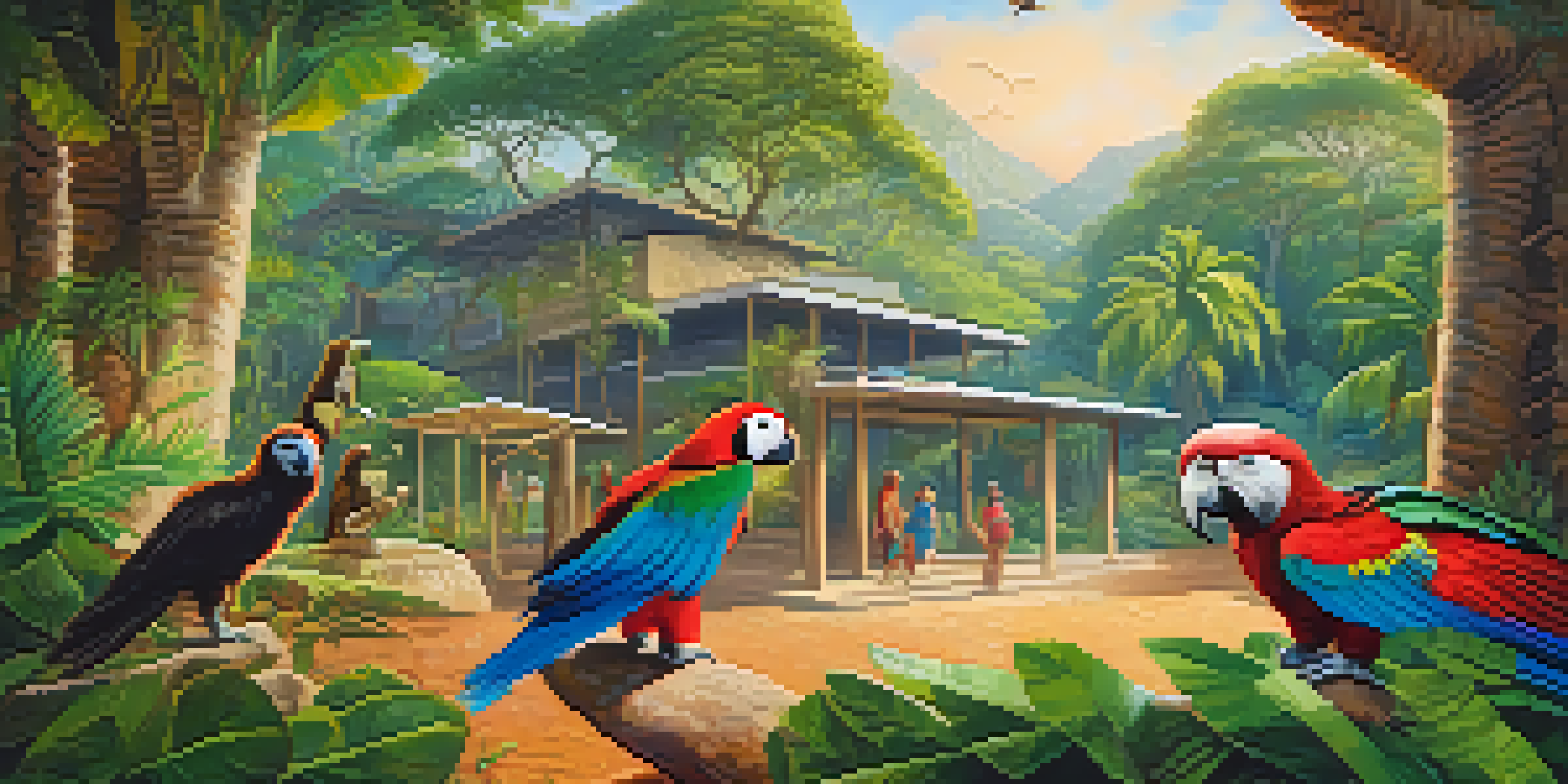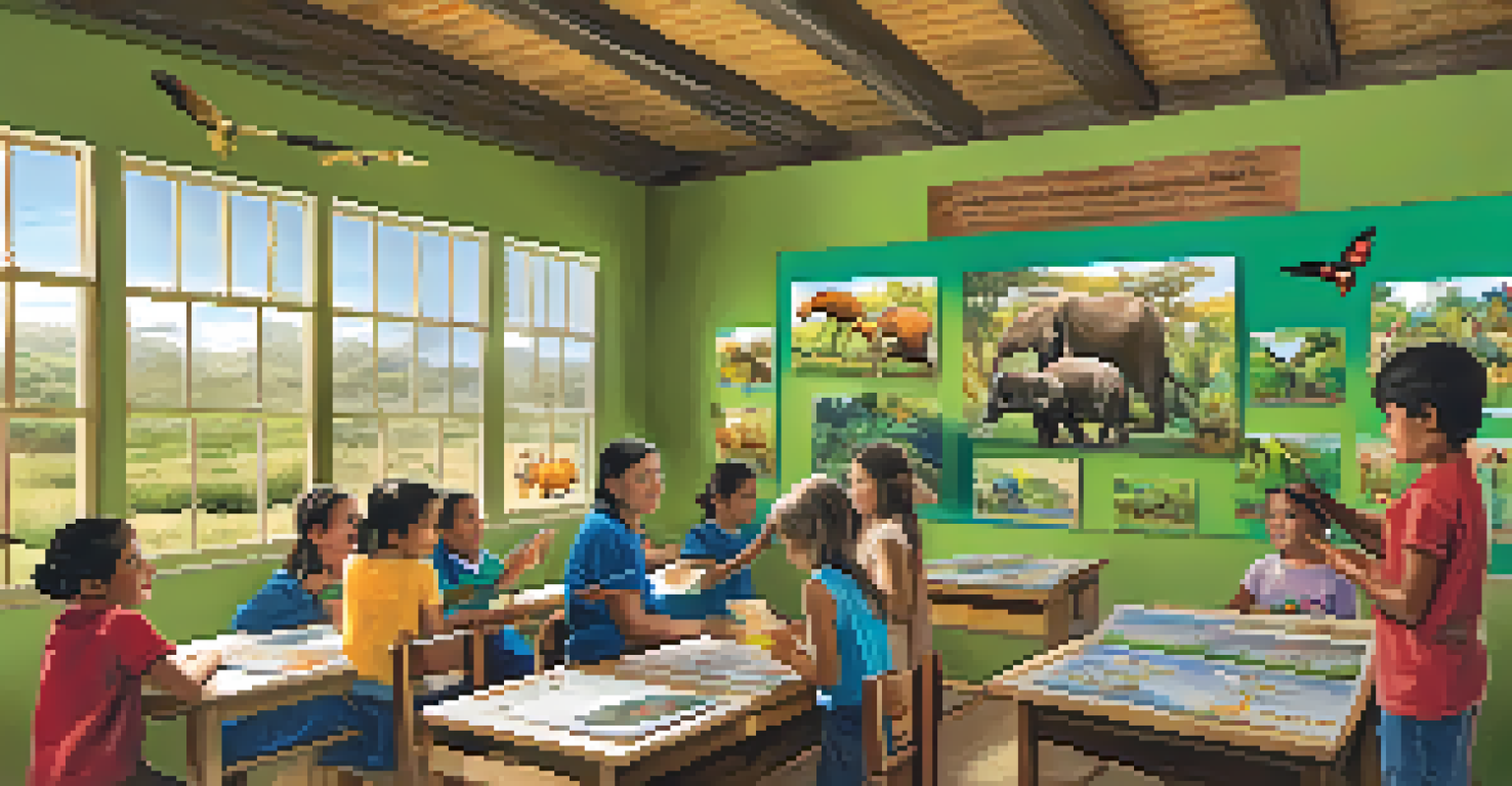Peruvian Wildlife Rehabilitation Centers: A Closer Look

Understanding Wildlife Rehabilitation in Peru
Wildlife rehabilitation in Peru plays a crucial role in conserving the country's rich biodiversity. Essentially, these centers provide medical care and a safe haven for injured or orphaned animals, helping them recover before returning to their natural habitats. This process not only aids individual animals but also contributes to the overall health of Peru's ecosystems.
The future will be a reflection of what we do today.
Peru is home to a vast array of species, many of which face threats from habitat loss, illegal trafficking, and climate change. Rehabilitation centers work tirelessly to address these issues, often collaborating with local communities and authorities to raise awareness about wildlife conservation. Through education and outreach, they empower people to protect their natural heritage.
These centers are not just about rescuing animals; they also serve as vital research hubs. By studying the behaviors and health of various species, researchers can gain insights that inform conservation strategies, enhancing our understanding of the delicate balance within ecosystems.
Common Species Treated in Rehabilitation Centers
A diverse range of species passes through the doors of Peruvian wildlife rehabilitation centers. From majestic Andean condors to colorful macaws and even the elusive jaguar, each animal has a unique story that highlights the challenges they face. For instance, many birds are rescued from illegal pet trade, while mammals often come from habitat destruction.

In particular, the Amazon rainforest, rich in biodiversity, is a hotspot for rescued wildlife. Here, you might find sloths, monkeys, and various reptiles, each needing care and support. Rehabilitation centers focus on providing necessary medical treatment and behavioral training to prepare these animals for life back in the wild.
Key Role of Wildlife Rehabilitation
Wildlife rehabilitation centers in Peru are vital for conserving biodiversity by providing medical care and safe havens for injured or orphaned animals.
The commitment to rehabilitation goes beyond just treating injuries; it often involves creating a suitable environment where animals can learn essential survival skills. Through this approach, centers aim to ensure a smoother transition for animals re-entering their natural habitats, increasing their chances of thriving.
The Role of Education in Wildlife Conservation
Education is a cornerstone of wildlife rehabilitation efforts in Peru. Many centers offer educational programs aimed at locals and visitors alike, focusing on the importance of wildlife conservation. By sharing knowledge about the challenges facing wildlife, these programs foster a sense of responsibility and connection to nature.
In every walk with nature, one receives far more than he seeks.
Workshops, guided tours, and volunteer opportunities allow people to engage with the mission of rehabilitation centers. Participants not only gain hands-on experience but also leave with a greater appreciation for the environment and its inhabitants. This grassroots approach is vital for cultivating future conservationists.
Moreover, educational outreach extends into schools, where children learn about local wildlife and the importance of preserving their habitats. This early exposure to conservation principles can inspire the next generation to take action, ensuring that the fight for wildlife continues.
Challenges Faced by Rehabilitation Centers
Despite their noble efforts, wildlife rehabilitation centers in Peru face numerous challenges. One significant obstacle is funding; many of these centers rely on donations and grants, which can be unpredictable. As a result, they often struggle to maintain facilities and provide adequate care for the animals.
Additionally, the ongoing threats to wildlife, such as habitat destruction and poaching, complicate the rehabilitation process. With their natural environments shrinking, more animals are being brought to centers for care, leading to overcrowding and limited resources. This situation makes it increasingly difficult to provide the individualized attention each animal deserves.
Education Drives Conservation Efforts
Educational programs at rehabilitation centers foster a sense of responsibility and connection to nature, cultivating future conservationists.
Furthermore, legal and bureaucratic hurdles can impede the work of rehabilitation centers. Navigating the regulations around wildlife care and release can be a cumbersome process, diverting attention from the animals that need help. Addressing these challenges requires community support and collaboration among various stakeholders.
Success Stories from Rehabilitation Efforts
Amid the challenges, there are countless success stories that highlight the positive impact of wildlife rehabilitation in Peru. For instance, the successful release of rehabilitated Andean condors back into the wild showcases the effectiveness of these programs. Once near extinction, their populations are slowly recovering thanks to dedicated efforts in rehabilitation and conservation.
Another inspiring example is the rescue of a group of spider monkeys, who were orphaned due to illegal logging. After extensive rehabilitation, these monkeys were successfully reintroduced to their natural habitat, where they can thrive and contribute to the ecosystem. Such success stories serve as a testament to the hard work and dedication of rehabilitation teams.
These accomplishments not only bring hope but also inspire further conservation efforts. By showcasing these victories, rehabilitation centers motivate supporters and volunteers to continue their work, emphasizing the importance of preserving wildlife for future generations.
How You Can Support Wildlife Rehabilitation Centers
Supporting wildlife rehabilitation centers in Peru can take many forms, and every little bit helps. One of the most impactful ways to contribute is through donations, which can provide essential resources for medical care, food, and facility maintenance. Many centers have online platforms where you can easily make a contribution.
Volunteering your time is another fantastic way to get involved. Many centers welcome volunteers to help with animal care, educational outreach, and administrative tasks. This hands-on experience not only supports the centers but also deepens your understanding of wildlife rehabilitation and conservation.
Challenges Facing Rehabilitation Centers
Despite their efforts, rehabilitation centers face challenges such as funding shortages, habitat destruction, and bureaucratic hurdles.
Lastly, spreading awareness about the challenges faced by wildlife and the importance of rehabilitation can amplify your impact. Sharing information on social media, attending local events, or even just talking to friends about these issues can create a ripple effect, encouraging others to join the cause.
The Future of Wildlife Rehabilitation in Peru
Looking ahead, the future of wildlife rehabilitation in Peru is both promising and challenging. With increasing awareness about the importance of conservation, more people are becoming involved in supporting these vital efforts. The growing interest in ecotourism also provides opportunities for rehabilitation centers to gain funding and visibility.
However, ongoing threats to wildlife will require continuous adaptation and innovation within rehabilitation practices. As climate change and habitat destruction persist, centers will need to develop strategies to address these evolving challenges. Collaboration with international organizations and local communities will be essential to enhance their efforts.

Ultimately, the commitment to wildlife rehabilitation will play a pivotal role in preserving Peru's unique biodiversity. By fostering a culture of conservation and encouraging sustainable practices, we can ensure that future generations inherit a thriving natural world, rich in wildlife and beauty.